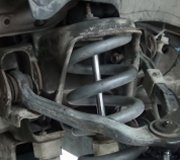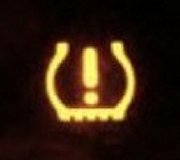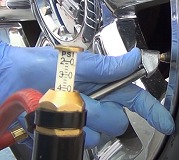Out of the two times that they have been balanced, have they ever been load force balanced? This is a different procedure available on some machines that can detect irregularities in tire/wheel assemblies. When did this vibration start occurring, was it there prior to having the tires replaced? Is it equipped with the factory wheels, or has there been an upgrade? Your vehicle is real susceptible to tire vibrations, and had been since that body style came out in 1998. One way to eliminate the tires being a concern, is to try set from another vehicle. There are a few bulletins I will provide you with, if for nothing more, to illustrate what I mean. Notice the vehicles affected, 98-2004 Seville.
#PIC3249: High Speed Shake or Vibration - kw 00-03-10-007G alignment rear seat tire vibration wheel - (Nov 15, 2004)
Subject: High Speed Shake or Vibration
Models:.
The following diagnosis might be helpful if the vehicle exhibits the symptom described in the PI.
Condition/Concern:
A high speed shake or vibration that does not get corrected by performing service bulletin 00-03-10-007G.
Recommendation/Instructions:
Be sure to check the rear wheel alignment. The rear wheel toe and camber can be out of specification and create a vibration in the vehicle. The toe being outboard 1/16 of an inch can cause the tire to move outward then retract inboard at a rapid pace to create a vibration through out the body. This same condition can also occur if the camber is out of specification.
.
Please follow this diagnosis process thoroughly and complete each step. If the condition exhibited is resolved without completing every step, the remaining steps do not need to be performed. If these steps do not resolve the condition, please contact GM TAC for further diagnostic assistance.
Models:
(1998-2005 Buick Park Avenue, Park Avenue Ultra) and (2000-2005 Buick LeSabre) and (1998-2004 Cadillac Seville SLS, STS) and (2000-2005 Cadillac DeVille) and (2001-2003 Oldsmobile Aurora) and (2000-2005 Pontiac Bonneville )
#00-03-10-007G: Shake/Vibration in Steering Wheel, Floor, Seat at Highway Speeds on Smooth Roads (Diagnose/Balance Tires/Wheels) - (Oct 1, 2004)
Subject: Shake/Vibration in Steering Wheel, Floor, Seat at Highway Speeds on Smooth Roads (Diagnose/Balance Tires/Wheels)
Models: 1998-2005 Buick Park Avenue, Park Avenue Ultra
2000-2005 Buick LeSabre
1998-2004 Cadillac Seville (SLS, STS)
2000-2005 Cadillac DeVille (DTS only)
2001-2003 Oldsmobile Aurora
2000-2005 Pontiac Bonneville (17" Tires only)
This bulletin is being revised to add the 2005 model year, add additional diagnostic information, and include the Coats XR1850. Please discard Corporate Bulletin Number 00-03-10-007F (Section 03 - Suspension).
Condition
Some customers may comment on shaking/vibration in the steering wheel, floor or seat while driving at highway speeds (typically between 60-72 mph (96-115 km/h)) on smooth roads.
Cause
These specific vehicles may be sensitive to various rotating mass assemblies, especially if they are considered to be out-of-balance.
Correction
Visually inspect the tires and the wheels. Inspect for evidence of the following conditions and correct as necessary:
"Â Missing balance weights
"Â Bent rim flange
"Â Irregular tire wear
"Â Incomplete bead seating
"Â Tire irregularities
"Â Mud/ice build-up in wheel
"Â Stones in the tire tread
Set the tire pressure to 30 psi (205 kPa) COLD.
Road test the vehicle with the Electronic Vibration Analyzer (EVA) essential tool for a sufficient distance on a known, smooth road surface to duplicate the condition. Record the Hertz (Hz) reading as displayed by the EVA onto the tire data worksheet found at the end of this bulletin. This should be done after a tire break-in period of at least 10 miles (16 km) at 45 mph (72 km/h) or greater, in order to eliminate any possible tire flat-spotting.
If the road test indicates a shake/vibration still exists, check the imbalance of each tire/wheel assembly on a known, calibrated, off-car dynamic balancer. If any assembly calls for more than  ounce on either rim flange, remove all balance weights and rebalance to as close to zero as possible.
Important: Some GM dealers may have a Hunter GSP9700 Road Force Balancer, or a Coats XR1850 Runout Balancer. Either will simplify Step 5 by not requiring dial indicators. If a Hunter GSP9700 machine is available, it may also be used to measure the radial force of the tire/wheel assembly. A guideline here is 18 lbs or less.
While on the balancer, measure wheel runout. If radial or lateral runout exceeds.020 in (0.50 mm) for aluminum wheels (.030 in (0.76 mm) for steel wheels), replace the wheel.
After confirming wheel balance and wheel runout, if any changes were made, road test the vehicle again.
If the smooth road shake/vibration still exists:
Important: The completed worksheet must be attached to the hard copy of the repair order.
"Â If a Hunter GSP9700 Road Force/Balancing machine is used, record radial force variation (RFV) on the worksheet at the end of this bulletin. If one or more of the tire/wheel assemblies read more than 18 lbs, match mount the tire to the wheel to get below 18 lbs. Readings of 12 lbs or less are preferable for sensitive customers.
"Â If a Coats XR1850 Runout/Balancing Machine is used, record radial runout of the tire/wheel assemblies on the worksheet at the end of this bulletin. If one or more of the tire/wheel assemblies are more than.040, match mount the tire to the wheel to get below.040. Readings of.030 inch or less are preferable for sensitive customers.
"Â If the RFV or runout cannot be reduced to an acceptable level, replace the affected tire(s) under the guidelines of the GM Tire Warranty.
"Â The screened tire program is only available for the General branded tires used on the Buick LeSabre. Complete the tire request form at the end of this bulletin and fax to Continental/General.
"Â Road test the vehicle to ensure the shake/vibration has been eliminated.
SPONSORED LINKS
Friday, March 5th, 2010 AT 11:17 PM



